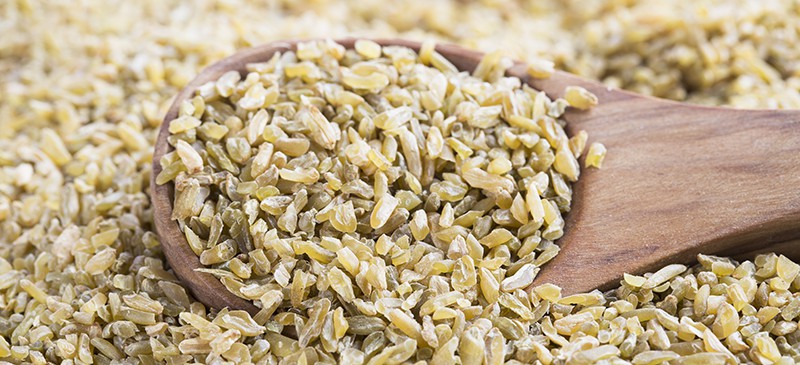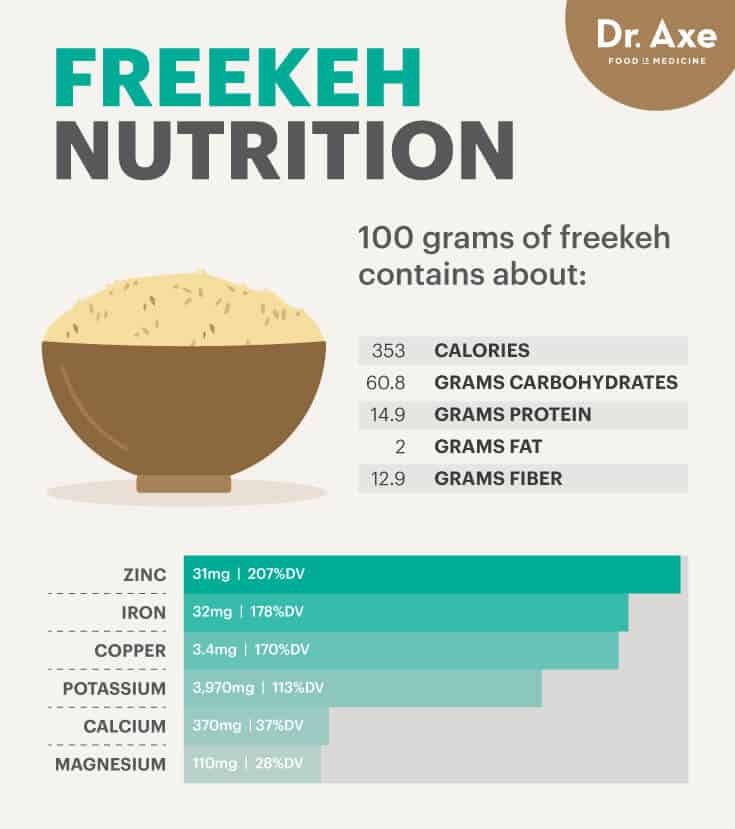This Dr. Axe content is medically reviewed or fact checked to ensure factually accurate information.
With strict editorial sourcing guidelines, we only link to academic research institutions, reputable media sites and, when research is available, medically peer-reviewed studies. Note that the numbers in parentheses (1, 2, etc.) are clickable links to these studies.
The information in our articles is NOT intended to replace a one-on-one relationship with a qualified health care professional and is not intended as medical advice.
This article is based on scientific evidence, written by experts and fact checked by our trained editorial staff. Note that the numbers in parentheses (1, 2, etc.) are clickable links to medically peer-reviewed studies.
Our team includes licensed nutritionists and dietitians, certified health education specialists, as well as certified strength and conditioning specialists, personal trainers and corrective exercise specialists. Our team aims to be not only thorough with its research, but also objective and unbiased.
The information in our articles is NOT intended to replace a one-on-one relationship with a qualified health care professional and is not intended as medical advice.
Is the Freekeh Supergrain the New Quinoa?
August 28, 2016

Despite its odd name, freekeh (pronounced free-kah), aka farik, may be the new supergrain. While quinoa has been high on the quest for healthy grain-like alternatives, freekeh, often spelled freekah or frikeh, has some benefits that may surprise you, while also providing some variety to your diet.
The biggest concern for many is the wheat factor since healthy wheat options are hard to come by, but if you get the right variety, you can get the proper nutrition from it. So why should you check out this new supergrain, and how does it compare to quinoa? I’m glad you asked.
Let’s start right off by saying freekeh is not a gluten-free grain, whereas quinoa is. However, it stands strong due to its low-fat, high-protein and high-fiber characteristics.
If we look at the servings, freekeh has more protein and almost double the fiber of quinoa, which may be why weight loss is a benefit — ultimately because you stay fuller longer. Another nutritional “yes” is that it ranks low on the glycemic index, coming in at 43, which can provide diabetics with a healthy option. (1)
Nutrition Facts
Freekah is high in iron, calcium and zinc, in addition to its prebiotic contents, which can help the digestive system work efficiently.
100 grams of freekeh contains about: (2)
- 353 calories
- 60.8 grams carbohydrates
- 14.9 grams protein
- 2 grams fat
- 12.9 grams fiber
- 31 milligrams zinc (207 percent DV)
- 32 milligrams iron (178 percent DV)
- 3.4 milligrams copper (170 percent DV)
- 3,970 milligrams potassium (113 percent DV)
- 370 milligrams calcium (37 percent DV)
- 110 milligrams magnesium (28 percent DV)
Health Benefits
1. Helps with Weight Control
Since freekeh is high-protein food and a high-fiber food, it may provide more satiety when eating it with your meal. Freekeh actually contains three times more fiber than brown rice. A diet rich in fiber may contribute to lower body weight by helping you feel full. (3)
A randomized, controlled trial conducted by the Annals of Internal Medicine reported that increased fiber consumption helped subjects lose weight. The study focused on weight changes over a period of 12 months, examining 240 adults with metabolic syndrome, and the findings indicate that at 12 months, there was great weight loss in the high-fiber diet group. (4)
2. Aids Eye Health
Freekeh contains the carotenoids lutein and zeaxanthin, which are antioxidants that help prevent age-related macular degeneration. Evidence suggests that lutein, for example, positively affects ocular development throughout life, actually starting in utero, and lowers the risk for the development of many age-related eye diseases.
These carotenoids are not only found in vegetables and fruits, egg yolks, and breast milk, but freekeh contains them too. (5)

3. Supports Healthy Digestion
The fiber in freekeh helps promote healthy bowel movements. Some of the carbohydrates are non-digestible insoluble fiber. Both soluble and insoluble fiber are good, but in this case the insoluble fiber helps your digestive health by adding bulk to stool.
This can provide relief from constipation, helping foods pass through your digestive system easily and efficiently. (6)
4. Treats IBS Symptoms and More Digestive Issues
Freekeh contains prebiotics, which are different than probiotics. Probiotics are beneficial live bacteria that you consume through things like kombucha, yogurt, kefir, miso and raw sauerkraut. Prebiotics help fuel the intestinal bacteria, the probiotics, and are found in plants. Though more studies are needed, these prebiotics may be helpful for anyone suffering from IBS, such as Crohn’s disease and ulcerative colitis. (7)
A 2012 report published in the Journal of Nutrition states that prebiotics, along with probiotics, can help treat many digestive problems, including: (8)
- diarrhea (especially after taking antibiotics)
- symptoms of IBS
- inflammatory bowel disease
- leaky gut syndrome
- Candida virus
5. Helps Build Strong Muscles
Freekeh contains about 2.27 grams of glutamic acid per serving, which is the highest amino amount in its amino acid profile. Popular to athletes and bodybuilders, glutamic acid helps synthesize glutamine and has the ability to help build endurance and strength. It does this through what’s called an excitatory neurotransmitter that resides in the central nervous system, the is most common neurotransmitter in the spinal cord and brain area. (9)
Uses
Freekeh can be found whole or cracked. It’s becoming much easier to find in health food stores and online — however, it’s found dry, much like how you would buy barley, brown rice or quinoa. (10)
It can be great as a side dish to most any meal, added to your favorite wraps and soups, and even served, oatmeal-style, for breakfast or as part of your favorite breakfast bowl.
Recipes
Kefir, Flax and Freekeh Blueberry Breakfast Bowl
INGREDIENTS:
- ½ cup cooked cracked freekeh
- 1 cup water (for richer flavor, try cooking in almond milk or coconut milk)
- 1 teaspoon vanilla extract
- ½ cup organic blueberries (fresh or frozen)
- 1 teaspoon cinnamon
- 1 teaspoon unrefined coconut oil
- ¼ cup kefir
DIRECTIONS:
- Using a saucepan, add ½ cup of cracked freekeh to 1 cup of water.
- Add the cinnamon and vanilla, then bring to a boil on the stove
- Simmer for 15-20 minutes.
- Similar to cooking rice or quinoa, once the water is absorbed and the grains are soft, it’s ready.
- Add the coconut oil while still hot and stir.
- Now, place 1/2 cup in a bowl. Top with the kefir and blueberries. Serve.
Here are a couple more recipes to try:
Interesting Facts
So now that we know what it can do, what is this freekeh grain exactly? It’s actually the name of the process used to prepare the grain. It contains a nutty and smoky flavor and is usually cooked, much like rice, as a side dish for meats or combined with vegetables. Considered an ancient grain, it’s a cereal-like food that comes from durum wheat.
Though it might be mentioned among some other supergrains like quinoa, spelt, amaranth and farro, it gets its flavor through a roasting process. It’s most popular in the eastern Mediterranean basin area. Because harvesting happens early in the growth phase of the durum wheat, while the grains are yellow and the seeds are soft, it offers loads of nutritional value.
Upon harvesting, heaps of the product are sun-dried and set on fire with the intention of only burning the straw and the chaff — a process that requires great deal of attention. You may be wondering how this process can be controlled. The seeds actually contain a high amount of moisture since they’re harvested while soft. This allows the burning process without actually burning up the seeds and chaff.
The next step involves taking the roasted wheat and putting it through a threshing, (or rubbing), and sun-drying process, which is when it gets it consistent flavor, texture and color. It’s this process that gives way to the name freekeh, or farikor, meaning “rubbed.” The last step involves cracking the seeds into smaller pieces, which is when they begin to look more like green bulgur wheat.
As previously noted, the term is actually the name of a process used to prepare the grains and not the name of a specific grain variety. However, it typically refers to wheat and generally to durum wheat or green durum wheat. So, although the process can be applied to other grains, such as barley, what you find on most shelves in the U.S. is usually wheat. Simply check the labeling to make sure.
Freekeh is native to the Mediterranean, parts of North Africa and Arab countries, especially Syria, Lebanon, Jordan and Egypt, where it replaces rice due to its superior nutritional benefits. Scientifically referred to as Triticum durum Desf., the word freekeh is Arabic, meaning “what is rubbed,” and refers to the rubbing technique necessary for processing. It’s usually made from durum wheat — however, in Egypt it often comes from barley.
The story on this ancient grain goes back a few thousands years to around 2300 B.C. It’s believed that a Middle Eastern village came under enemy attack when its crops of young, green wheat caught fire. The villagers needed to preserve anything they could and managed to save their food supply through a little discovery, ultimately rubbing away the burned chaff, which gave way to the roasted wheat kernels it housed. This is how the grain got its name, which means “to rub” or “the rubbed one.”
In addition to becoming common in Mediterranean and Middle Eastern cuisines, its popularity grew to Australia, which is where the modern processing of this supergrain was established. (11)

Risks and Side Effects
Freekeh is an amazing ancient power-grain — however, if you have problems with gluten or have celiac disease, this is not a good choice for you. Make sure to buy pure versions instead of products that have added flavors to avoid processed ingredients and preservatives.
Final Thoughts
Freekeh is a grain alternative similar to quinoa, and while it’s not gluten-free like quinoa, it has more fiber and protein. It’s been shown to help with weight control, aid eye health, support healthy digestion, treat IBS and help build strong muscles.
Given that we all enjoy variety, freekeh can provide just that. It’s a great choice delivering loads of nutrients and benefits to the eyes, the digestive system and more. If you haven’t tried freekeh, try one of the recipes above and let us know what you think.













